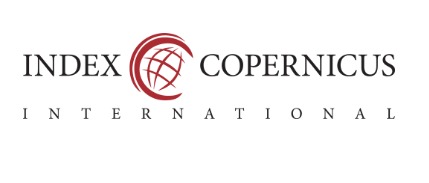The design and development of Bijak Seni, a teaching and learning module that incorporates computational thinking skills in visual art education for secondary school
Abstract
Aim: This study aimed to investigate the feasibility of implementing CT techniques in a Visual Art Education setting. A teaching and learning module called Bijak Seni (Smart Art) was designed and developed based on the ADDIE Model to incorporate CT elements into the teaching and learning of drawing and painting at the secondary level.
Method: Presented in the form of a sketch and workbook, this module was printed in color and A3 size. At each tier, a list of learning goals was also included. Students were given ample space to write and scribble ideas. Experts, educators, and students in the field of Visual Art Education participated in a survey.
Findings: Results showed that the application of CT in the Bijak Seni Module helped students understand the requirements of the tasks in the Visual Art Education exam. 95.9% of students agreed that applying the CT process helped them to improve their drawing and painting skills. The module also helped them to identify important requirements of the questions, break down the complexity of the required tasks, analyze the drawings made, develop ideas to define the key requirements of the questions, and select the best media and method to deliver their drawing and painting, to meet the objectives and requirements of the examination questions.
Implications/Novel Contribution: Furthermore, the Bijak Seni Module can also be applied in any art classroom at any level to improve the teaching and learning of drawing and painting based on certain given standards or requirements. Introducing CT in teaching and learning will give good implications for current Visual Art Education in the 21st Century, motivating student learning and increasing innovative thinking among visual art education students.
References
Barr, V., & Stephenson, C. (2011). Bringing computational thinking to K-12: What is involved and what is the role of the computer science education community? Acm Inroads, 2(1), 48-54. doi:https://doi.org/10.1145/1929887.1929905
Bundy, A. (2007). Computational thinking is pervasive. Journal of Scientific and Practical Computing, 1(2),67-69.
Computer Science Telecommunications Board. (2010). Report of a workshop on the scope and nature of computational thinking. Retrieved from https://bit.ly/2NPP1cl
Duff, L., & Davies, J. (2005). Drawing-the process. Bristol, UK: Intellect.
Einhorn, S. (2011). Micro-worlds, computational thinking, and 21st-century learning. Retrieved from https://bit.ly/37lacKY
European Commission. (2009). Sustainability report. 2009. Retrieved from https://bit.ly/2tvVr9G
Grover, S., & Pea, R. (2013). Computational thinking in K-12: A review of the state of the field. Educational Researcher, 42(1), 38-43. doi:https://doi.org/10.3102/0013189x12463051
Ibrahim, M. N., & Hassan, I. (2003). Art education: For colleges & universities. Jakarta, Indonesia: PTS Publications & Distributors.
Kamaruddin, N., & Sulaiman, S. (2017). A conceptual framework for effective learning engagement towards interface design of teaching aids within tertiary education. Journal of Advanced Research in Social Sciences and Humanities, 2(1), 35-42.
Malroutu, Y. L. (2017). Enhancing student learning experience in blended classroom teaching. Journal of Advances in Humanities and Social Sciences, 3(6), 324-331. doi:https://doi.org/10.20474/jahss-3.6.4
Mishra, P., Yadav, A., Group, D.-P. R., et al. (2013). Rethinking technology & creativity in the 21st century. Tech Trends, 57(3), 10-14. doi:https://doi.org/10.1007/s11528-013-0655-z
Naz, A., Khan, W., Khan, Q., Daraz, U., & Mujtaba, B. G. (2013). Teacher’s questioning effects on students communication in classroom performance. Context, 4(7), 45-50.
Qualls, J. A., & Sherrell, L. B. (2010). Why computational thinking should be integrated into the curriculum. Journal of Computing Sciences in Colleges, 25(5), 66-71. doi:https://doi.org/10.1002/cc.36819927704
Redecker, C., Leis, M., Leendertse, M., Punie, Y., Gisjsbers, G., Kirchner, P., . . . Hoogveld, B. (2011). The future of learning-preparing the change. Retrieved from https://bit.ly/37rMyg5
Selby, C., & Woollard, J. (2013). Computational thinking: The developing definition (Unpublished masters thesis). University of Southampton, London, UK.
Taher, M. A., Shrestha, P. N., Rahman, M. M., & Khalid, A. K. M. I. (2016). Curriculum Linked Video (CLV) as a tool for English Language Teaching (ELT) at secondary school classrooms in Bangladesh. International Journal of Humanities, Arts and Social Sciences, 2(4), 126-132. doi:https://doi.org/10.20469/ijhss.2.20002-4
Wing, J. (2011). Research notebook: Computational thinking-what and why? The link. Pittsburgh, PA: Carneige Mellon.
Wing, J. M. (2006). Computational thinking. Communications of the ACM, 49(3), 33-35. doi:https://doi.org/10.1145/1118178.1118215
Wing, J. M. (2008). Computational thinking and thinking about computing. Philosophical Transactions of the Royal Society A: Mathematical, Physical and Engineering Sciences, 366(1881), 3717-3725. doi:https://doi.org/10.1098/rsta.2008.0118

This work is licensed under a Creative Commons Attribution-NonCommercial 4.0 International License.












.png)










